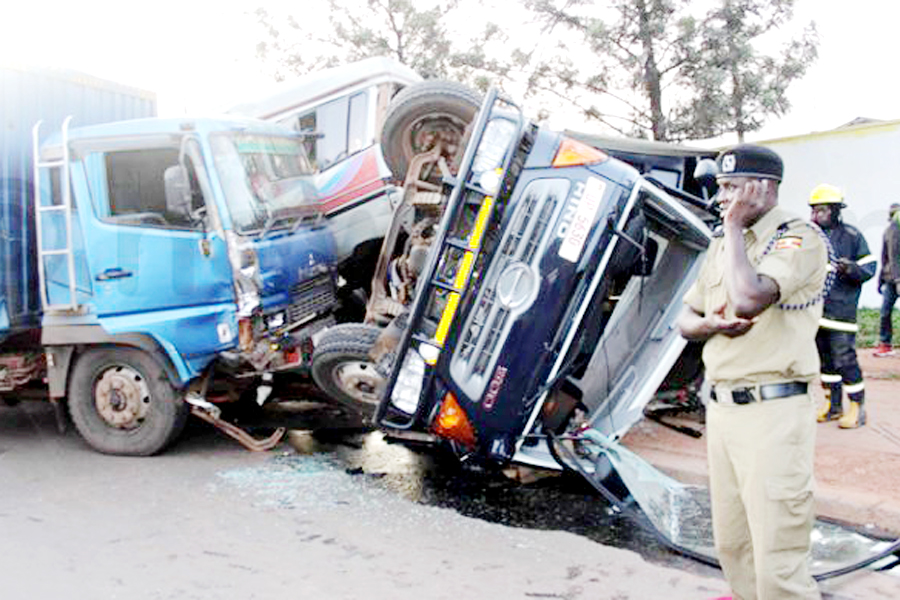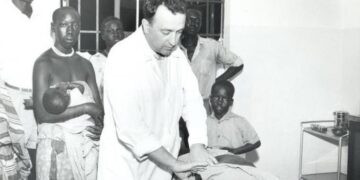Dr. Miriam Laker-Oketta
One evening, I sat morbidly watching a long video on YouTube. A video on the aftermath of that gruesome accident in Nkumba on Entebbe Road, which occurred in April 2024. For about an hour, that cement mixer sat heavily on top of the white Mitsubishi. For the long hours, people gathered and watched, some taking videos and photos on their smartphones. Other motorists inevitably slowed down when they reached the site. I imagined them craning their necks at the scene, shaking their heads at the tragedy and driving off to continue with their lives. For the long hours, the police kept the crowds from coming too close to the scene. Was it to prevent looting or out of respect for the man in the car? The man who a few minutes earlier was a healthy, father, husband, friend and lawyer.
Many long hours later, they lifted the cement mixer and they lifted the car completely flatted on the driver’s side. I shut off the video and realised that while I had forwarded most of the long hours, I had had a front-row seat at these events. A few weeks earlier, I had looked at a video in total horror as that same cement mixer approached an intersection behind several cars, waiting for the light to turn green. The mixer did not slow down but sort of climbed on the road island before toppling sideways onto a sleek small car with that poor man minding his own business. In this issue, I was tasked with writing about the red eye disease but my mind has been consumed by the state of our roads. Road traffic accidents in Uganda have become a severe public health concern.
On Divine Mercy Sunday this year, we mourned the loss of a friend, Comboni Brother; Cosmas Ochan Okech, to yet another road accident. He was a young man, just shy of 33. Two years ago, during Easter week, our children lost their chess coach, also in his early thirties, in a tragic accident involving a semi-truck and a taxi that raced each other in Kyambogo.

My thoughts drift back to the day our final medical school results were announced. Dr. Paul Otim, one of my classmates lost his life when a vehicle collided with the side of the car he and his father were traveling in on a seemingly safe village road. A surgeon who had once been our friend and instructor in medical school, now a leading surgeon in Soroti Hospital, desperately tried to save him. However, Paul or Paulo as we fondly called him, did not make it. Months later, on our graduation day, Paul’s seat remained empty, right in front of mine.
As we stood up, raised our right hands and took the Hippocratic Oath as new doctors, we felt the absence of Paul’s parents (a doctor and nurse) among the proud parents. Paul would never take the oath or walk the hospital halls in a white coat, without the red badge that marked us as students. He would never hear the patients he had trained so hard to treat call him Dr. Paul Otim.
Then, another year and another and yet another year later, three more of our medical school classmates perished in road traffic accidents, leaving behind young families. A charismatic classmate from primary school left her bank office to run a quick errand in Kampala during lunchtime and a reckless motorist ensured, she never returned. The stories don’t end there. Years ago, during our S4 vacation, a quiet primary school classmate, Sydney, perished in a road accident. On Kira Road up the road from Kitante Primary School is a silent zebra crossing.
Those of us who know the story see in our minds every time we approach it the little boy in P1 dropped by his parents in the 1980s setting off across the road but never making it to school because a vehicle that was in a hurry struck him dead. Today, as I waited for a woman to cross the zebra crossing at the Kampala post office, I saw in my mind’s eyes my friend’s adult brother who was knocked dead at that very spot a few years ago. I will not start on the people who drown in the open drains in our city.
Globally, road accidents are the leading cause of death for young people aged 5-29, claiming 1.35 million lives annually. Low and middle-income countries account for 85% of these accidents, while high-income countries account for 15%. In Uganda, approximately 54 out of every 100,000 Ugandans die from road traffic accidents annually, ranking the country 6th in the world. In the country, the most common cause of emergency room admission is road traffic accidents, accounting for 67% of injuries, 87% of which involve brain injuries.
According to the Uganda Police Force Annual Report 2022, Uganda witnessed 20,394 road traffic accidents, marking a 17% increase from 2021. In 2021 alone, there were 17,443 accidents, reflecting a 42% increase from 2020. Shockingly, 22 people died in every 100 crashes in 2022, and 61% of the accidents were caused by reckless driving. During the first eight days of 2023, there were 340 accidents, resulting in 79 deaths and 245 injuries. In July 2023, there were 432 accidents, with 97 fatalities, 202 serious accidents and 133 minor accidents.
The author has an advanced training in Epidemology and Biostatistcs. Her current research focus is HIV- associated mailgancies, specifically Kaposi’s sarcoma and cervical cancer epidemiology, early detection, diagnosis and treatment. She is also co-founder of the Hub for African Women in Science (AWiSH)
















